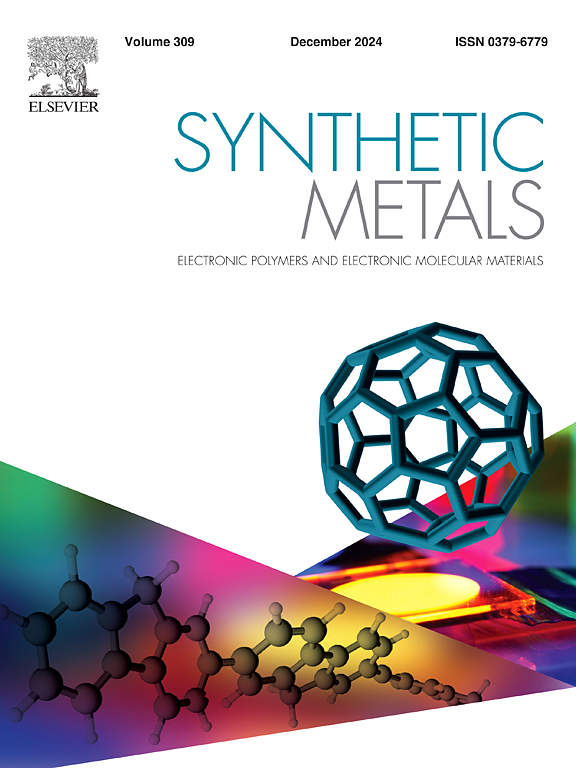Synergistic enhancement of conductivity in natural rubber – PEDOT:PSS composites using glycerol, polyethylene glycol, and CNTs
IF 4.6
3区 材料科学
Q2 MATERIALS SCIENCE, MULTIDISCIPLINARY
引用次数: 0
Abstract
This study presents the preparation and analysis of conductive composite films based on natural rubber (NR) and PEDOT:PSS. The percolation fitted model was applied to evaluate the electrical behavior of the composites, resulting in a percolation threshold at a PEDOT:PSS volume fraction of 0.67. SEM and IR analyses confirmed that continuous conductive networks were not formed below this threshold. To enhance conductivity in the sub-threshold regime, glycerol and polyethylene glycol (PEG) were added as non-conductive additives, resulting in up to two orders improvement in conductivity compared to the additive-free system. Further enhancement was achieved through the incorporation of glycerol and carbon nanotubes (CNTs), increasing conductivity to 1.01 × 10−2 S/m at the volume fraction PEDOT:PSS of 0.2 below the percolation threshold. SEM and IR analyses indicated the improvement in dispersion and interfacial interaction. These findings highlight additive-assisted strategies as effective in lowering the percolation threshold and offer a scalable route for developing flexible, low-cost conductive polymer composites.
使用甘油、聚乙二醇和碳纳米管协同增强天然橡胶- PEDOT:PSS复合材料的导电性
研究了基于天然橡胶(NR)和PEDOT:PSS的导电复合薄膜的制备和分析。应用渗透拟合模型评估复合材料的电行为,得出PEDOT:PSS体积分数为0.67时的渗透阈值。扫描电镜和红外光谱分析证实,在这个阈值以下,没有形成连续的导电网络。为了提高亚阈值状态下的电导率,将甘油和聚乙二醇(PEG)作为非导电添加剂添加,与不添加添加剂的体系相比,电导率提高了两个数量级。通过加入甘油和碳纳米管(CNTs)进一步增强了电导率,在PEDOT:PSS低于渗透阈值0.2的体积分数下,电导率提高到1.01 × 10−2 S/m。扫描电镜(SEM)和红外光谱(IR)分析表明,分散和界面相互作用有所改善。这些发现强调了添加剂辅助策略在降低渗透阈值方面的有效性,并为开发柔性、低成本导电聚合物复合材料提供了可扩展的途径。
本文章由计算机程序翻译,如有差异,请以英文原文为准。
求助全文
约1分钟内获得全文
求助全文
来源期刊

Synthetic Metals
工程技术-材料科学:综合
CiteScore
8.30
自引率
4.50%
发文量
189
审稿时长
33 days
期刊介绍:
This journal is an international medium for the rapid publication of original research papers, short communications and subject reviews dealing with research on and applications of electronic polymers and electronic molecular materials including novel carbon architectures. These functional materials have the properties of metals, semiconductors or magnets and are distinguishable from elemental and alloy/binary metals, semiconductors and magnets.
 求助内容:
求助内容: 应助结果提醒方式:
应助结果提醒方式:


